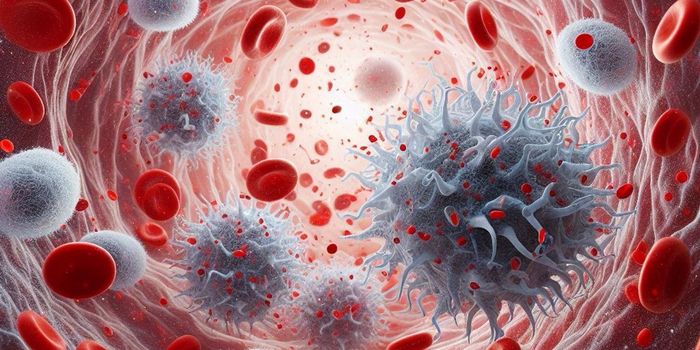Electronic "nose" sniffs out the best cancer treatment
Can you imagine an electronic device that is capable of figuring out which lung cancer patients will respond best to immunotherapy? If so, now try to imagine that device in the quaint form of a nose. Hah! Well, give a warm welcome to eNose, the electronic nose that detects chemicals in the breath of lung cancer patients and is able to identify with 85% accuracy which patients will or will not respond to immunotherapy.
The news about eNose was published in a study recently in the journal Annals of Oncology and comes from researchers led by Professor Michel van den Heuvel, who is a professor of thoracic oncology at the Radboud University Medical Centre in The Netherlands.
Professor van den Heuvel commented, "The introduction of immunotherapy has dramatically improved the treatment of advanced-stage non-small cell lung cancer but unfortunately it is only effective in a subset of patients, which was about 20% when we started the study. Currently, there is no test available that can accurately predict who will benefit from this treatment, apart from PD-L1 testing by immunohistochemistry. This is today's biomarker of choice, despite its analytic and predictive limitations, when making clinical decisions about whether or not to treat a patient with immunotherapy."
The PD-L1 testing that the professor refers to immunohistochemistry (IHC) tests that sample tissues for the presence of the protein called programmed death-ligand 1 (PD-L1), which is the target for anti-PD 1 therapies. Needless to say, tissue sampling is a lengthy and invasive procedure.
Ms. Rianne de Vries, co-first author of the study, stated: "We hypothesized that exhaled breath analysis using eNose technology might be a non-invasive and rapid alternative to the current standard and would enable doctors to avoid treating patients with immunotherapy to which they would not respond."
So, what exactly does eNose look like and how does it work? Imagine you have been diagnosed with non-small cell lung cancer and are trying to figure out if immunotherapy is an appropriate treatment for you. With eNose, you could take a deep breath, hold it for 5 seconds, and exhale into the nose. The device will then be able to read the chemicals in your breath called volatile organic compounds (VOCs), which change depending on the metabolic processes going on in your body.
As Ms. de Vries explains further, “The eNose sensors respond to the complete mixture of VOCs in the exhaled breath; each sensor has its highest sensitivity to a different group of molecules. The sensor readings are sent directly to and stored at an online server for real-time processing of the data and for ambient air correction because the air that you exhale is influenced by the air that you inhale. The measurement takes less than a minute, and the results are compared to an online database where machine-learning algorithms immediately identify whether or not the patient is likely to respond to anti-PD1 therapy."
In conducting their study, the researchers found that the eNose had an 85% accuracy rate in detecting which patients will respond to immunotherapy. Because the device is relatively inexpensive (it is currently in the production process), the authors hope that it will offer an alternative to IHC, with better results for patients.
"Our findings show that breath analysis by eNose can potentially avoid application of ineffective treatment to patients that are identified by eNose as being non-responders to immunotherapy, which in our study was 24% of the patients. This means that in 24% of NSCLC patients this treatment could be avoided, without denying anyone effective treatment,” said co-first author Dr. Mirte Muller.
Sources: Science Daily, Annals of Oncology









